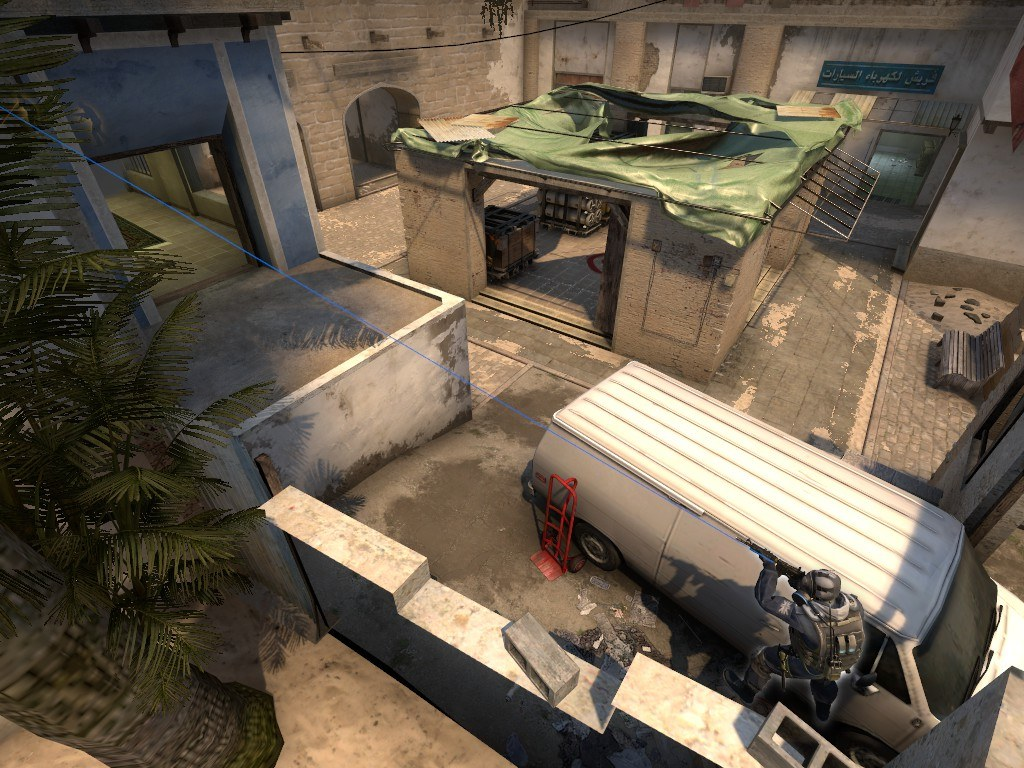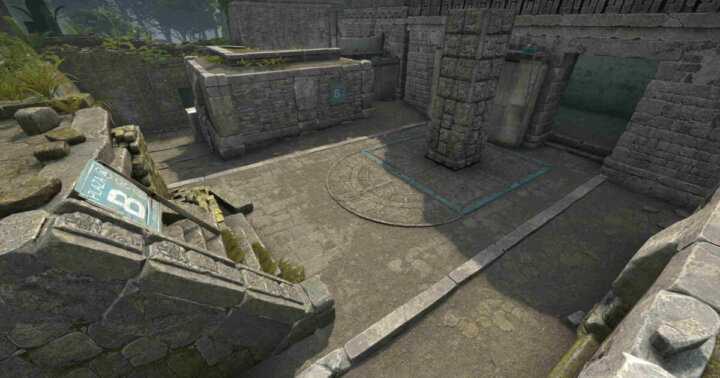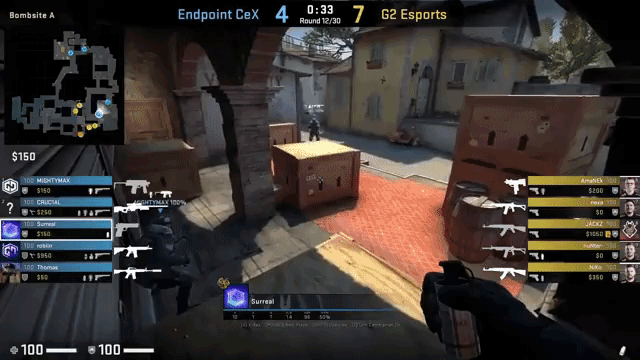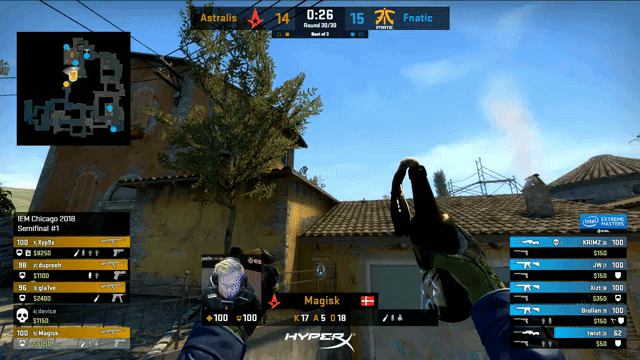How to Conquer a New Map - A CS:GO Guide
In this guide, we talk about the map pool as a whole, along with how to approach each new map you want to learn.
In this guide, we talk about the map pool as a whole, along with how to approach each new map you want to learn.
So far with my guides here at Dignitas, we’ve talked about site-anchoring, proper utility, good communication, etc. The one topic that we’ve yet to talk properly about is the maps themselves, the battlegrounds which we declare war on. Unsurprisingly, they are a vital key to becoming a better player, as you should probably understand all of your maps before you master your spray transfers.
With Ancient being added into the map pool and being the talk of the town recently, it felt like a great time to talk about the best ways to approach every new map you learn, including new additions like the above mentioned Ancient and everyone’s favorite map to hate Vertigo. We will talk about the theory of practicing new maps, the most effective ways to practice these maps, and any notes that we might be able to take from the players at the top of the professional scene. Mastering any map can feel impossible, but with a little practice and a lot of good time, you can feel comfortable in any battleground you enter.

The first topic is the most obvious but easily the most important: You need to actually play the map. Not the next queue, or the one after, or maybe you’ll wait for your friends to get on so you can all play it together. No. You just have to play it. A huge issue with a lot of lower level pugs or matchmaking games is that everyone plays the same set of maps without fail, unwilling to try anything new so they can play Mirage one-hundred times in a row. This can be frustrating and genuinely the hardest part of this whole guide, as just finding a group of ten that actually play the map you want to play can feel ridiculously hard.
For this reason, I would learn popular maps like Mirage, Dust II and Inferno before you try to master anything else, as these are easily the maps I’ve cycled through the most while queueing. Ultimately, any time on these maps will help, and even just getting one game in can make the difference whenever you step foot into the practice server.
For a lot of people who are familiar with more strategic CS, their first instinct when approaching a new map is to learn all of the important utility so they can understand how to take map control effectively. In reality, this generally just means that they will learn a few of the most basic smokes and call it good. Now while just learning the basic smokes of a map (things like CT on Mirage or Cat on Dust II) can be heavily beneficial, I have found that it is incredibly helpful to learn all of the most useful utility for every nade on your belt.
To me, there is nothing I value more in a random teammate than someone offering a perfectly timed flashbang or molotov that will help me and my team win a round. And even if you never feel like you will actually need to flash or throw a molotov, it is always nice to know the map to the smallest detail, as you’ll never know when it will come in handy.

A huge way to practice this utility is in your very own practice server. Setting up the actual server is very simple and really only requires a few settings to be turned on in a casual server with bots. There are a ton of guides on how to make this happen, so I won’t go too deep into it here as the actual set-up isn’t as important, rather the way you implement and practice this utility is the most vital.
Like anything you have to learn, if you learn it in bad circumstances and don’t practice effectively, you could waste time trying to memorize your lineups. You could spend hours throwing nades in a private server, but none of that matters if you roll into an actual game and can’t remember any of it. Do whatever it takes to build each lineup into your own personal muscle memory, whether that is just hours of repetition, or pretending like you are running through your own personal route.
While we are on the topic of practice, I think the final hurdle before you can run free on any map of your choosing is similar to the very first point: apply all of the things you learned on the map in real time...or in simpler terms, just play it. Practicing smokes and pre-fire angles is all well and fine in the comfort of your practice server, but if you don’t properly apply all of it to a real game, then you might find it a little awkward when you do actually go and play the map.
If I’m being honest, your first couple of games on a brand-new map can be some of the most un-fun CS that you will ever play, purely because there is a good chance that others may be a little more versed on the map. But once you have that one game, one where you absolutely dominate, use all of your utility, trash talk, etc... you will never want to play another map again. Until you learn the next one. Except Train, poor Train just can’t play with all of the other cool maps anymore.

An old phrase that I’m sure everyone has heard ever says something along the lines of: time, it’s important. And while I may be joking with the phrasing, I’m deadly serious with the messaging. Just like anything you work on, you won't be perfect at it immediately. I know this is generally a very obvious statement, but I’ve found that it still troubles many players that I played with, including myself.
When learning things, we tend to look at them in milestones, so that makes it quite easy to grow complacent with your progress because we remember the best moments and tend to kinda pass by the mediocre one. Never let yourself grow complacent with your map knowledge, practice your smokes, rehearse your routes. It never hurts to go over even the most obvious things.
Unfortunately, me and my friend’s ridiculous double a-fake on Ancient will not set the meta for the map, the only ones who dictate that sort of thing are the ones that get paid the big dollars to play the game as a career. With this point, it is relatively simple, just watch the pros. Not only do you watch VODs of the games that are played live but watch the demos as well.
Seeing directly what the pros have all decided is the way the map should be played is immensely helpful and can give you a good idea of what utility is the most effective to learn and practice. I’ll give an example, the very first set of A-smokes I learned came from an Astralis B-Site strategy that essentially showed off every single important smoke for taking the site. Of course, some may want to completely copy the strategy and teach their teammates mid-game (which is impossible by the way) but there is nothing wrong with trying to find a smoke or flash you don’t know by ripping it straight from a demo. Professional CS players are literally the best that there is, so why not take a few notes?

New maps are always me and my friends' least favorite part of CS:GO. Especially new ones like Ancient or Vertigo that come into the pool and throw the entire meta into a frenzy. But new maps into the competitive pool is the kind of thing that keeps this game alive and fresh. We could PUG endless hours of Mirage or Dust II, but seeing real developmental support go into new maps that change the way we think of the game will add years of longevity that we don’t expect out of an old game.
But ultimately, some of this article might fall flat on some players, as the game is what you want it to be, no matter how many names I can scream into the either that Inferno isn’t a good map. Play the game and play it your way, but if you ever want to talk about learning maps, I’m all ears.
Visit our partner VIE for the safest market and best customer care in esports betting.
Must be age 18+ and reside in a country where online gambling is legal. Gamble responsibly.